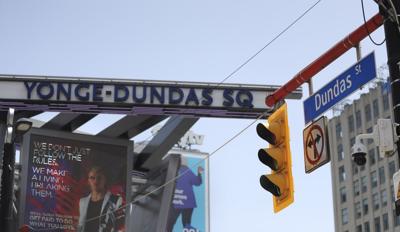There’s no disputing that “sankofa” is a wonderful concept, a term of west African origin reflecting attitudes and practices to which all could profitably aspire.
Let us also say that, for all his catalogued transgressions, late former Toronto mayor Rob Ford was widely popular and not without redeeming qualities.
That noted, neither Sankofa Square nor Rob Ford Stadium is an appropriate choice as name for a significant public place in Toronto, at least not when these are sprung on residents with no meaningful consultation.
Both should be withdrawn by Toronto Council for reconsideration.
As a rule, such names should have some tangible connection to this place. Moreover, any individuals chosen for such honour should be best known for accomplishment and worthy example.
Sankofa doesn’t meet that first standard. Rob Ford doesn’t meet the second.
If the choices for the renaming of Yonge-Dundas Square and Centennial Stadium in Etobicoke were unfortunate, the process that produced them was simply unacceptable.
You might be interested in
The resulting controversy offers lessons in the fundamental need to respect the public in the conduct of public affairs, and to take advantage of opportunities for consultation, engagement and community building.
At a guess, most Torontonians likely first heard the word “Sankofa” after city council’s vote to rename Yonge-Dundas Square as Sankofa Square was done.
As a notion, it is delightful, a word taken from the language of Ghana’s Akan people and loosely translated to “go back and get.”
The message that “it’s never too late to go back and get what you lost or left behind” is particularly germane to our time, to our place and to our way of engaging with politics and each other.
But the bafflement and anger at the choice was understandable, given that it seemed to be imposed from on high with little consultation.
To its credit, amid our ongoing renaming controversy, city council was working toward a compromise by renaming two subway stops and Yonge-Dundas Square rather than erasing Dundas as a street name from locations across the city.
Such reduction in scale avoided chaos and costs for businesses, confusion for wayfarers and the expense of renaming the entire street.
The initial plan was to develop a short-list for community discussion, but that -- with Fordian arbitrariness -- was short-circuited by Mayor Olivia Chow.
What resulted was a name that lacked much resonance with the city, a well-intentioned reach producing tenuous connection and familiarity.
By choosing Sankofa, council lost an opportunity to choose a name connected to the Indigenous peoples who inhabited this land and whose descendants remain in the community.
That misfire is difficult to understand.
A name chosen from a universe of Indigenous values and phrases would have served as a powerful reminder of the city’s history and provided tangible evidence of reconciliation.
When the choice of a name is controversial or unfamiliar, or overlooks communities with better claim, civic leaders had best involve a significant public process to explain it.
Similar concerns apply to the renaming of Centennial after Rob Ford.
Tradition might require that something be named after a former mayor. And, if anything was to be named after so controversial an occupant of the office, a sports venue was likely the best choice.
But judging by public reaction, there was an overwhelming sense that the renaming was forced upon the city, with too little discussion or opportunity for public input on whether it was merited.
It became plain, even eight years after Ford’s death and a decade after his term as mayor, that his behaviour deeply embarrassed Torontonians, who reasonably seemed to feel he had forfeited all claim to conventional honours.
The names had political acceptance. What they lack is community acceptance. These are public assets. The values associated with the names need to resonate with residents.
Councillors committed the cardinal sin of taking the public for granted.
They should reconsider both their process and its outcomes.












